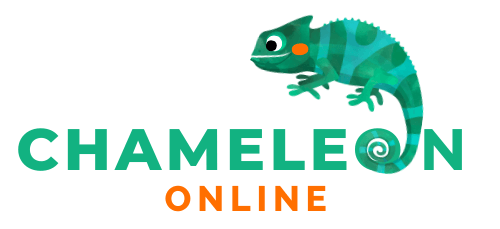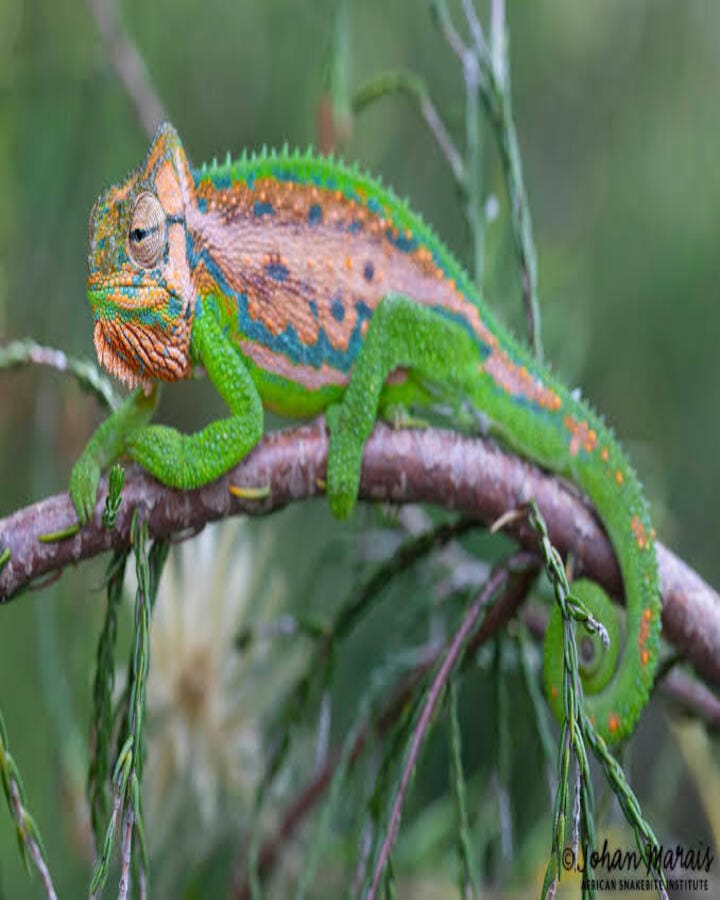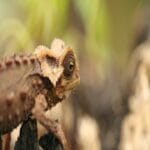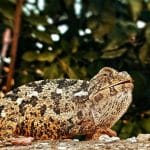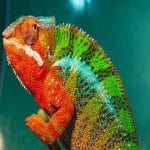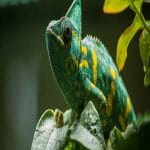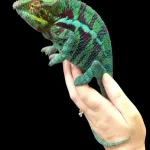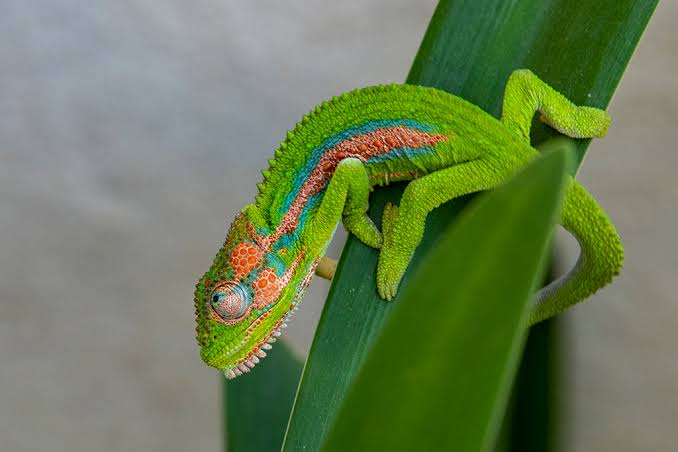
Image Credit – Hema
mong South Africa’s most fascinating reptiles is a small, colorful, and elusive creature known as Bradypodion pumilum or Cape Dwarf Chameleon. Despite its tiny size, this remarkable species captures the imagination of wildlife enthusiasts and researchers alike for its incredible adaptability, camouflage skills, and vital role in its ecosystem. In this article, we explore the world of Bradypodion pumilum or Cape Dwarf Chameleon—its habitat, behavior, diet, and the conservation challenges it faces.
Bradypodion Pumilum or Cape Dwarf Chameleon
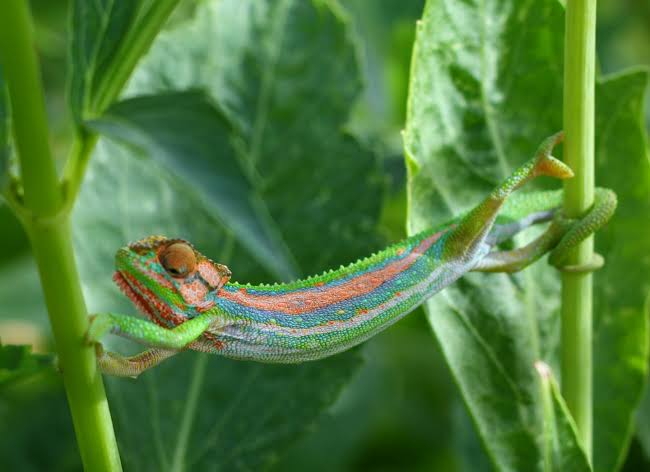
Understanding Bradypodion Pumilum
Bradypodion pumilum belongs to the family Chamaeleonidae, which includes all chameleons. This species is endemic to South Africa, particularly found in the Western Cape region. As one of the many dwarf chameleon species, the Cape Dwarf Chameleon is known for its small size, typically ranging from 10 to 15 centimeters in length, including its tail.
Unlike the large chameleons found in tropical regions, Bradypodion pumilum is a temperate species that thrives in cooler, coastal climates. Its color patterns vary widely, featuring shades of green, brown, yellow, and even orange, depending on mood, environment, and temperature. This color-changing ability not only helps it blend into its surroundings but also communicates mood and territorial behavior.
Habitat and Distribution
The Cape Dwarf Chameleon is native to the fynbos biome and coastal forests of the Western Cape, including areas around Cape Town and Stellenbosch. It prefers dense vegetation, shrubs, and small trees where it can easily camouflage among leaves and branches.
Interestingly, as human development has expanded, Bradypodion pumilum has adapted to living in suburban gardens and parks. Many homeowners in Cape Town even find these tiny reptiles among their garden plants, serving as natural pest controllers. However, their survival depends heavily on access to natural vegetation and the avoidance of pesticides and domestic predators such as cats.
Behavior and Adaptation
Bradypodion pumilum is primarily a diurnal species, meaning it is active during the day. Its most famous adaptation is its color-changing skin, controlled by special pigment cells called chromatophores. The chameleon’s ability to change color is influenced by temperature, light, and emotional state rather than direct background matching.
Like other chameleons, the Cape Dwarf Chameleon has independently moving eyes, allowing it to observe two directions at once. This unique vision helps it detect predators and prey with precision. Its prehensile tail acts like a fifth limb, giving it extra balance and grip when navigating through branches.
When threatened, Bradypodion pumilum may puff up its body, open its mouth wide, and display bright warning colors to scare off predators. If this fails, it relies on its camouflage to remain unnoticed.
Diet and Hunting Techniques
The Cape Dwarf Chameleon is an insectivore, feeding mostly on small insects such as flies, crickets, beetles, and moths. Using its long, sticky tongue, which can extend almost twice its body length, the chameleon captures prey with lightning speed and accuracy.
Its slow and deliberate movements allow it to approach insects without alarming them. This patient hunting style makes Bradypodion pumilum an effective insect controller in its habitat, maintaining balance within local ecosystems.
Reproduction and Lifespan
Unlike many reptiles that lay eggs, the Bradypodion pumilum gives birth to live young—a trait known as ovoviviparity. Females typically produce between six and twenty babies after a gestation period of three to four months. The newborns are independent from birth and immediately begin hunting small insects.
In the wild, Cape Dwarf Chameleons live for about three to five years. However, this can vary depending on environmental conditions, predators, and habitat safety.
Conservation Status and Threats
The Cape Dwarf Chameleon is currently classified as Near Threatened due to habitat loss, urban expansion, and the illegal pet trade. Their natural habitats are shrinking as fynbos and forest areas are converted into housing or agricultural land.
Additionally, the widespread use of pesticides reduces their food supply and can be fatal if ingested indirectly. Domestic cats also pose a major threat in suburban areas, as chameleons are slow-moving and easy targets.
Conservation organizations in South Africa are working to protect this unique species by preserving natural habitats, raising public awareness, and discouraging the capture of wild chameleons for the pet trade.
The Importance of Bradypodion Pumilum
Bradypodion pumilum or Cape Dwarf Chameleon plays a crucial ecological role in maintaining insect populations and contributing to biodiversity. Its presence in gardens and wild vegetation is a positive sign of a healthy environment. Protecting this small yet significant reptile helps preserve the delicate balance of the ecosystems in which it thrives.
The Bradypodion pumilum or Cape Dwarf Chameleon is a fascinating example of nature’s creativity and resilience. Despite its small size, it demonstrates remarkable adaptations—from color-changing skin to specialized hunting skills. Yet, its survival depends on the protection of its natural habitat and the reduction of human threats. By understanding and respecting these tiny creatures, we help ensure that future generations can continue to marvel at the wonders of the Cape Dwarf Chameleon.
Frequently Asked Questions
What is Bradypodion Pumilum or the Cape Dwarf Chameleon?
Bradypodion Pumilum or the Cape Dwarf Chameleon, is a small chameleon species native to South Africa’s Western Cape region. It is known for its vivid colors, ability to change shades, and slow, deliberate movements that help it blend into its environment.
Where does the Cape Dwarf Chameleon live?
The Cape Dwarf Chameleon inhabits the fynbos and coastal forests of the Western Cape, particularly around Cape Town and Stellenbosch. It thrives in areas with dense vegetation and has even adapted to suburban gardens and parks where native shrubs and trees are present.
Why is the Bradypodion Pumilum important for the ecosystem?
This small chameleon plays a vital ecological role by controlling insect populations, which helps maintain natural balance in its habitat. Its presence indicates a healthy environment.
